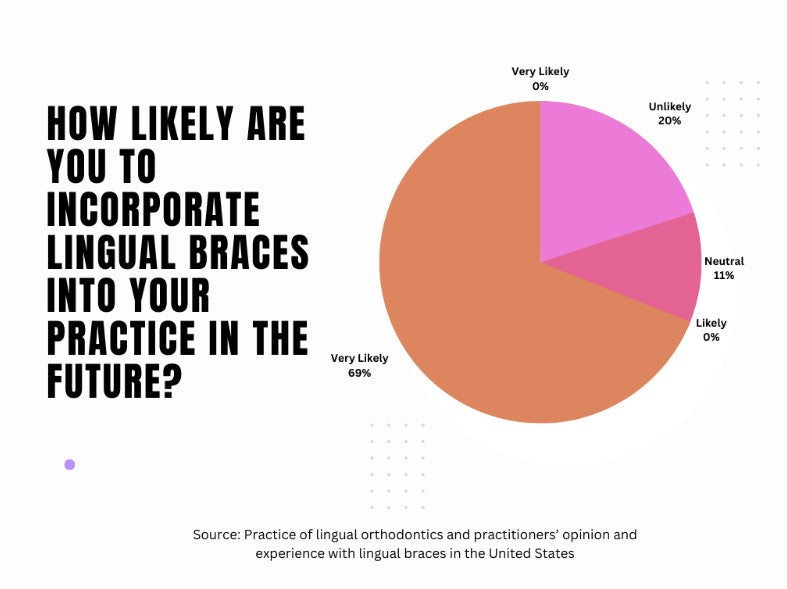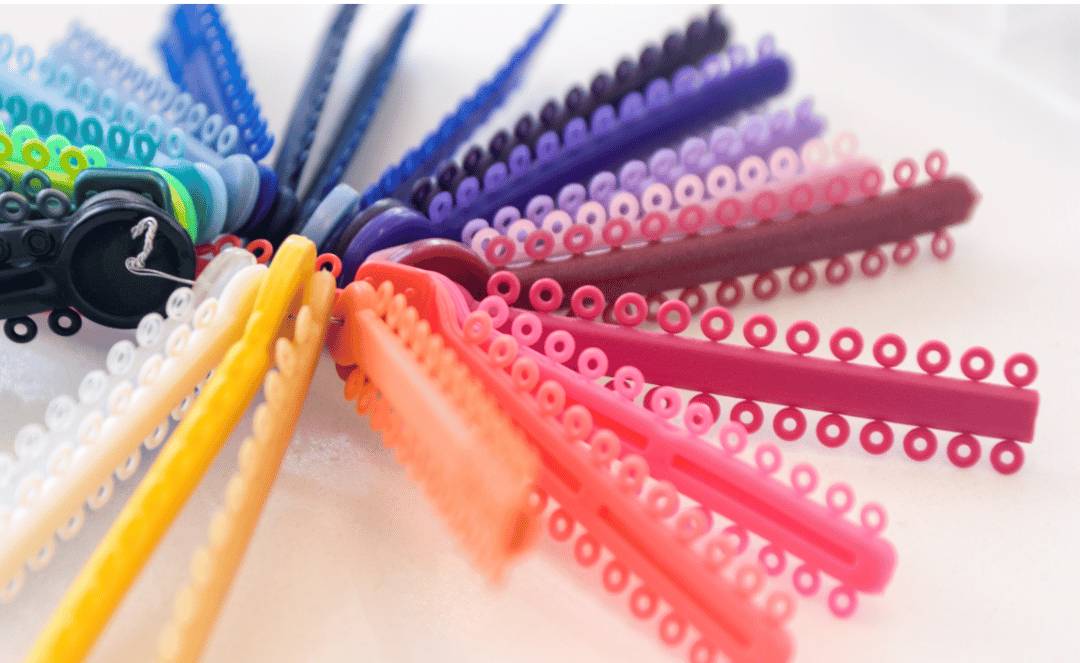Types of Braces: Your Guide in 2025

If you’re planning to have braces to completely enhance your smile, know that there are different types to choose from. And each type has its own advantages and disadvantages.
To determine the most suitable treatment option, it is crucial to carefully evaluate the pros and cons associated with each type. That’s why we’re breaking each type for you to help you arrive at an informed decision.
What are braces?
Dental braces, also known as orthodontic cases, are dental appliances that help correct orthodontic issues such as malocclusion or excessive, overcrowded teeth. This misalignment causes what dentists call a “bad bite.”
Typically, they consist of several components namely:
- Brackets
- Archwire
- Ligatures (O-rings)
- Buccal tubes
- Springs, hooks, and other accessories
The braces apply continuous pressure on the teeth, gradually shifting them into their correct positions over time. The orthodontist adjusts the braces periodically to ensure proper alignment and to account for the changes that occur during treatment.
Orthodontic treatment with braces usually lasts between one to three years. After the desired tooth alignment is achieved, a period of wearing retainers follows to maintain the new position of the adjusted teeth.
There are five types of braces, traditional metal braces, ceramic, lingual, self-ligating, and clear aligners.
When choosing a type of dental braces, several considerations come into play. These considerations may vary depending on factors such as personal preference, orthodontic needs, lifestyle, and budget.
Nonetheless, here’s an overview of the types of braces including their pros and cons.
Metal braces
The use of traditional metal braces can be traced as far back as ancient times. It’s fascinating because archeological discoveries revealed mummified skeletons having crude metal attachments on their teeth, which experts believed were what we consider traditional braces today.
And when you think about traditional braces, stainless steel bands, brackets, and wires easily come to mind.
While metal braces receive a lot of flak for their uncanny look and feel, dental professionals consider them the most effective option. In fact, a study revealed that the most frequently preferred brackets by patients were the regular metal brackets (99.5%) in comparison to other types of brackets.

Furthermore, ongoing scientific studies in orthodontics have created appliances and substances that enable faster tooth movement and reduced discomfort.
Among these advancements, thermal "NiTi" archwires have emerged as an effective solution capable of achieving both objectives.
When exposed to the warmth of the oral cavity, these wires are triggered and initiate a gradual reshaping process, delicately shifting teeth into their proper positions. This gentle and continuous pressure proves highly effective in swiftly and comfortably moving teeth, ultimately reducing the duration of wearing braces.
Like any dental appliance, traditional metal braces are not without their disadvantages. These downsides include:
- Unappealing look
- Soreness and discomfort
- Oral hygiene issues
- Diet restrictions
- Longer treatment duration
Ceramic braces
Ceramic braces work in the same way as metal braces. However, the main distinction between ceramic braces and metal braces is the material used for the brackets. Unlike metal braces, which use stainless steel brackets, ceramic braces employ brackets made from a tooth-colored or translucent ceramic material.
When it comes to performance, there isn't a significant difference between ceramic braces and traditional metal braces in terms of their impact on teeth. Both types of braces are generally regarded as equally effective in achieving the desired orthodontic results.
The difference between the two lies mainly in their appearance and other practical considerations such as cost, durability, and comfortability.

For example, ceramic braces are less noticeable due to their tooth-colored or translucent brackets, making them a popular choice for those who desire a more discreet treatment. However, they may be slightly more prone to breakage or chipping compared to their metal counterparts.
The process of straightening teeth using ceramic braces typically takes approximately 18 months, compared to less than a year to three years for metal braces.
The reason has something to do with ceramic braces being less resilient. Ceramic braces may require more frequent bracket replacements and may involve extra appointments with the orthodontist to fix broken brackets.
And because ceramic braces use more delicate and expensive bracket materials, they tend to be a pricier alternative compared to metal braces. On average, ceramic braces can cost between $3000 to $8000.
Lingual braces
Let’s face it. Not everyone is a fan of how dental braces look. But if the thought of metal brackets bothers you, you should try lingual braces.
Lingual braces function the same way as conventional braces, except they’re fixed behind your teeth or “lingual,” meaning placed on the side facing the tongue.

They’re an excellent option for teens and adults with minor to moderate bite issues. Professionals such as actors or performers who are ultra-conscious of their looks may benefit from lingual braces as they offer a more discreet treatment.
Dentists, however, may not recommend lingual braces to patients with deep bites or severely misaligned teeth. Extreme overbites can put too much pressure on the brackets and cause them to fall off easily.
Nonetheless, lingual braces can still offer many advantages:
- They’re virtually invisible, thus, will not result to aesthetic issues
- Proven to be effective in correcting most bite problems
- Customizable, therefore, can increase comfort while maximizing efficiency
A survey was conducted to gather insights from orthodontists regarding their firsthand experience with lingual orthodontics.
The survey revealed that orthodontists who incorporated lingual orthodontics into their practice reported a generally high level of satisfaction with the overall outcomes of cases treated using lingual braces.
There are also a few drawbacks you might want to consider when opting for lingual braces. Some of them are:
- Tongue discomfort and irritation
- Higher cost
- Temporary speech and eating difficulty
Remember that the discomfort and changes in speech and eating habits when wearing lingual braces are usually small, and most patients quickly get used to them.
Our orthodontists at Culver City Dentist, for example, have the expertise to assist patients during this adjustment period and offer valuable guidance and support throughout the treatment process.
Self-ligating braces
Traditional braces use elastic bands or metal ties to secure archwires in the brackets. In contrast, self-ligating braces have a built-in system or a locking method (either a clip, cap, or gate mechanism) holding the archwire inside the bracket slot.
Self-ligating braces were designed to remove metallic and elastomeric ligatures found in traditional braces. The underlying idea was to establish a friction-reduced environment, enabling smoother sliding mechanics and potentially shortening treatment duration.
There are two types of self-ligating brackets: active and passive.
Active brackets use a thicker archwire and apply greater pressure to the teeth. The increased pressure or active force delivered by the ligation clip onto the patient’s archwire helps move the teeth aggressively into the correct position.
On the other hand, passive brackets don’t press on the archwire. Instead, they use a simple sliding mechanism. They often use smaller archwires to maximize space between each bracket. Passive ligating brackets are designed to reduce friction and allow for a wider range of movement.
Over the years, new types of self-ligating appliances have been developed, contributing to their popularity. Patients choose self-ligating braces for the following reasons:
- Fewer or shorter orthodontist visits – their unique design and system allow for easier and quicker adjustments, helping to reduce overall treatment time and minimize the number of trips to the orthodontist.
- Easier cleaning - their design eliminates the need for elastic or metal ligatures, reducing the areas where plaque and food particles can accumulate.
- Reduced discomfort – since they exert gentler forces on the teeth, self-ligating braces minimize friction and pressure during orthodontic treatment, thus reducing discomfort.
According to a study, the main drawback of the self-ligating system, when compared to traditional brackets, is that it poses challenges in achieving precise control over torque expression.
Torque expression in braces treatment refers to the ability of the orthodontic appliance to apply rotational forces to the teeth.
The same study suggested that there is no compelling evidence to suggest that self-ligating brackets significantly reduce the overall treatment time compared to conventional brackets.
Also, self-ligating braces can be more expensive than conventional braces due to factors such as the design and technology and additional factors such as the extent of correction required and the duration of the overall treatment.
Invisalign Clear Aligners
Invisalign can be considered one of the most well-established and widely recognized clear aligner products, with a rich history.
Since being introduced to the market in 1998 by Align Technology, clear braces have become increasingly popular in the past few decades to straighten or realign teeth.
Unlike conventional braces, Invisalign braces are made of clear, removable, and BPA-free plastic.
Invisalign offers a range of advantages for patients seeking orthodontic treatment. One notable benefit is the nearly invisible appearance of the braces, making them significantly less noticeable.
This discreet feature is especially appealing to individuals who prioritize the aesthetics of their treatment.

Additionally, the aligners are removable, allowing for easy maintenance of oral hygiene. Patients can conveniently take out the aligners while eating, brushing, and flossing, contributing to an improved overall dental experience, and helping to uphold oral health during the treatment period.
Moreover, Invisalign aligners provide a more comfortable wearing experience when compared to traditional braces.
The smooth plastic material minimizes the likelihood of discomfort or irritation commonly associated with metal brackets and wires.
The aligners are designed to shift the teeth gently and gradually into the desired position, ensuring a controlled treatment process. Furthermore, Invisalign aligners can be customized to suit the specific needs of each patient, offering a personalized orthodontic solution that can deliver effective and long-lasting results.
Are Invisalign clear braces worth every buck? We’ve written a comprehensive guide for you.
Choosing the Right Types of Braces for Your Needs
Choosing the right braces for your needs requires careful consideration and professional guidance. It is essential to consult an orthodontist and undergo a comprehensive orthodontic evaluation to assess your unique dental condition, jaw alignment, tooth position, and oral health.
In case you’re looking for a trusted orthodontist to guide your orthodontic treatment, talk to our orthodontist at Culver City Dentist United Dental Care.
Whether you're dealing with overcrowded teeth, misaligned bites, or gaps between your teeth, we offer a range of treatment plans tailored to your specific needs and personal preferences.
Contact Culver City Dentist United Dental Care today to schedule a consultation and discover the braces options that are right for you.
Last updated: January 26, 2025




 By:
By: 
